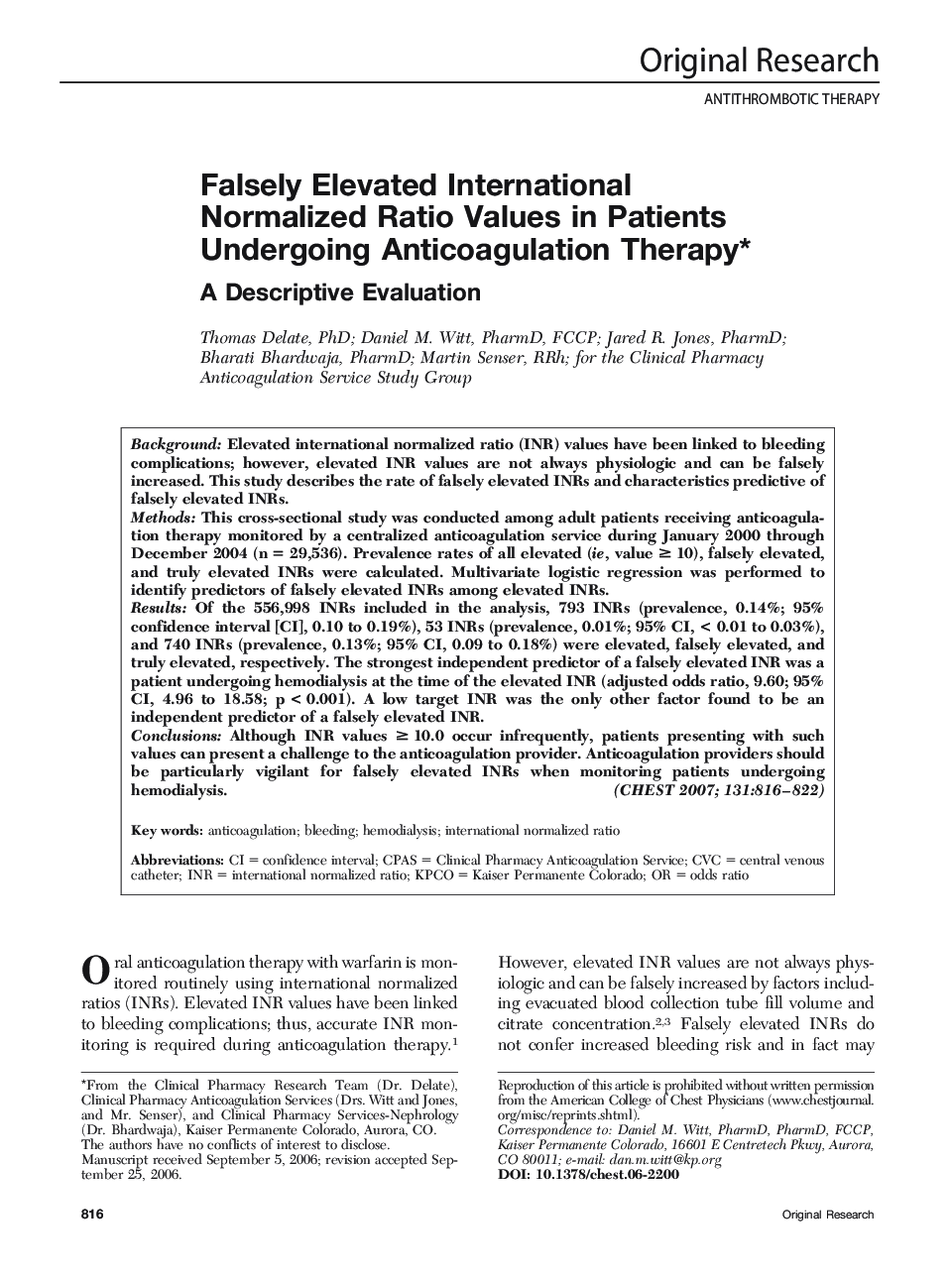| Article ID | Journal | Published Year | Pages | File Type |
|---|---|---|---|---|
| 2905246 | Chest | 2007 | 7 Pages |
Background:Elevated international normalized ratio (INR) values have been linked to bleeding complications; however, elevated INR values are not always physiologic and can be falsely increased. This study describes the rate of falsely elevated INRs and characteristics predictive of falsely elevated INRs.Methods:This cross-sectional study was conducted among adult patients receiving anticoagulation therapy monitored by a centralized anticoagulation service during January 2000 through December 2004 (n = 29,536). Prevalence rates of all elevated (ie, value ≥ 10), falsely elevated, and truly elevated INRs were calculated. Multivariate logistic regression was performed to identify predictors of falsely elevated INRs among elevated INRs.Results:Of the 556,998 INRs included in the analysis, 793 INRs (prevalence, 0.14%; 95% confidence interval [CI], 0.10 to 0.19%), 53 INRs (prevalence, 0.01%; 95% CI, < 0.01 to 0.03%), and 740 INRs (prevalence, 0.13%; 95% CI, 0.09 to 0.18%) were elevated, falsely elevated, and truly elevated, respectively. The strongest independent predictor of a falsely elevated INR was a patient undergoing hemodialysis at the time of the elevated INR (adjusted odds ratio, 9.60; 95% CI, 4.96 to 18.58; p < 0.001). A low target INR was the only other factor found to be an independent predictor of a falsely elevated INR.Conclusions:Although INR values ≥ 10.0 occur infrequently, patients presenting with such values can present a challenge to the anticoagulation provider. Anticoagulation providers should be particularly vigilant for falsely elevated INRs when monitoring patients undergoing hemodialysis.
